Donna Robinson Divine was the President of the Association for Israel Studies. In this careful and empathic account of the relationship between the Yishuv and the Diaspora in the years of the Mandate, she rejects the notion that one was simply ‘negated’ by the other. She directs our attention instead to the ‘wrenching tensions and productive partnerships’ which formed the complex and evolving relationship between Jews in Palestine and Jews in the Diaspora.
Introduction
Zionism, Israel’s foundational ideology, is forged around an exodus story in which people escape death and destruction to rebuild a promised land, resurrect a language, and transform a people through sweat and toil. By an act of collective will a Jewish state would be created along with a new kind of social order: without hierarchy, without exploitation, and with justice and equality for all. Zionist leaders pushed this notion to its extreme by presenting the agricultural collectives [kibbutzim]—never encompassing more than a tiny percentage of Israel’s population [under one per cent in some years]—as emblematic of the Jewish State.
Although this carefully curated dream could never be fully realised in practice, we should not diminish the scale of what was established in 1948. Zionism managed to establish a widely accepted and highly valued relationship between land, people, and language. Reviving the Hebrew language became an instrument to transform a people once defined by their religious customs and law into a nation bound together by a shared, albeit often newly invented, set of mores. A culture was created whose literature and ideas were expressed in Hebrew and whose ancient laws and rituals could be translated into national traditions. This was the groundwork for both the liberation Zionists sought from religious authority, and for the state that offered Jews something Zionists believed could be found nowhere else—the opportunity to take full advantage of the dazzling opportunities offered by the modern world. Work, rather than textual study, legitimised possession and was the vehicle for creating community, and for transforming sites holy in scripture into places sacred to a homeland.
However, the grand Zionist rhetoric sometimes came at a cost. Encouraging immigrants to accept the process of nation building as the task of their lives, to the exclusion of so much else, magnified the everyday difficulties of integrating into the Jewish national home. For example, during the Mandate, the Zionist movement spoke of ‘negating the Diaspora’; in effect saying the transformation of the Jewish people was needed not simply because their dispersion endangered their lives and culture but also because it distorted their values. Zionists insisted that only by repudiating the culture and society of the Diaspora, viewing those roots as a past best discarded, could liberation be secured. Palestine’s Jews knew they were participants in a story attracting intense global attention, but they were also conscious of being caught up in a risky political experiment. And while being told to divest themselves of all that was familiar from the lands of their birth—values that gave shape and meaning to their lives—new arrivals could not help but feel discomforted.
The Zionist rhetoric, by proclaiming homeland and exile as bipolar opposites, generated serious fault lines inside and outside the Yishuv. What was proclaimed in words—’Negate the Diaspora’—could never be implemented in deeds. The Diaspora could be denounced and rejected but never actually banished. And so, as faultlines opened up between Zionist theory and Palestinian practice, and as these became an enduring, if unacknowledged, feature of the development of a Jewish National Home, both wrenching tensions and productive partnerships formed the complex and evolving relationship between Yishuv and Diaspora. Not all who came to live in the land of Israel fell under the spell of the radical Zionist program of that required individuals to shed the customs and traditions of their ancestors. Many immigrants had come to Palestine naturally inclined to replant their familiar religious and communal organisations in their new homeland.[i] Many immigrants lacked ties to Zionist movements; ordinary people—artisans, skilled laborers, proprietors of small workshops— who sought a better life in the Jewish National Home. Zionist leaders may have agonised over what they deemed the atavistic beliefs and rituals of some of the Jews arriving, but many who did arrive showed continued reverence for religious traditions even as they shouted out their newly formed nationalist goals.
Politics and Partnerships
Even as Zionism posited an opposition between Diaspora and Palestinian Jewish society, it became the reason for sustained contacts between the two.[ii] Sensitive to the fact that Jewish political power was widely dispersed, Palestine’s Zionist political leaders traveled to Europe several times a year to consult with heads of various organisations in major Jewish population centres. Policies were often hammered out during meetings in Europe, where priorities with regard to the distribution of immigration certificates were agreed. These activities had an enormous effect on the social structure and economic development of Palestine’s Jewish community.
European Zionists shaped the creation of the new Jewish society in other ways as well. The shift in financial aid from the small to the large commune or kibbutz was decided by the World Zionist Organisation and not by local activists. The kibbutz stabilised as an institution because of its association with a network of Diaspora organisations. Movements such as he-halutz gave the kibbutz its sense of mission as a core state-building institution, and by recruiting new members, Zionists living in the Diaspora imbued kibbutz leaders with immeasurably greater confidence in its future.
An associational politics was created with Palestine’s Jewish representatives—the community’s up-and-coming leaders—invited to spend a year or more in the Diaspora preparing Zionists there for life and work in the homeland. The practice of sending such activists to the Diaspora created a realm of intense political interaction for European and Palestinian Zionists. Palestinian teachers often learned political strategies from their European students, many of whom later immigrated and continued to exert a direct impact on the distribution of political power in Palestine’s Jewish community.
Take, as one example, Zionist backing for the progressive cause of removing the so-called ghetto benches in Polish universities in the 1930s.[iii] Such Zionist interference in Diaspora politics could easily, by improving conditions in the Diaspora, have hampered efforts to increase the Jewish population of Palestine. In fact, the discourse of civic equality in Poland soon threaded its way into the speeches of Ben-Gurion in his response to the 1939 White Paper.
Leaders of many Zionist political parties understood that the well-being of their institutions and organisations depended on their success in generating and maintaining loyalty in the Diaspora as well as in the Jewish National Home. Their more powerful branches in various countries of Europe sometimes overshadowed even the strongest of Palestine’s political parties. Torn between conflicting needs, these political parties frequently had to respond to demands issued simultaneously from two different continents or sometimes had to establish priorities between them, often beholden to continental trends.
Economy and Philanthropy
Despite all of the hoopla about economic independence and a productive Jewish economy, the national home relied on external financial aid and channeled large amounts of money into subsidies to control inflation and raise the standard of living. Capital accumulated in the lands of the Diaspora poured into real estate, outstripping investments directed to industrial developments. In 1927 Chaim Arlosoroff warned against ‘dependency on Zionist philanthropy,’ which created what he called, ‘an artificially high standard of living in Palestine.’ ‘The Yishuv,’ he wrote, ‘had to learn to live within its means.’[iv] During the 1920s private investment in the Jewish National Home exceeded that of public Zionist funds flowing into the country. Even some of the refugees fleeing from Bolshevism had capital. For them, Palestine represented an opportunity for private investment and individual affluence. Public funds were poured into building workers’ apartments and used to dampen inflationary pressures.
Land and Conflict
It is important to remember that the move from old world to new homeland contained an irony no immigrant anticipated. Although Zionists in Europe could take the idea of Jewish nationhood as a given, they were forced to see it as a problem in the homeland. To believe they had come home, immigrants had to negate the evidence of their senses because of their demographic relationship to the local population of Arabs as well as to the significantly larger stream of Jews that continued to move West until blocked either by U.S. law or by Soviet edict. The shortages of capital and natural resources that constrained economic development and added to the burdens of meeting individual and household needs could not help but raise further questions about Zionism’s long-term prospects.
Rebellions and riots also reminded Palestine’s Jews that their claims were contested and that their political objectives would be vigorously opposed. The outbreak of war in 1939 confirmed Zionist views of the insecurities of life in the Diaspora, but it also deepened the sense of weakness among Palestine’s Jews as relatives and a reservoir of potential immigrants were transported to death camps and not to the land of Israel.
To repeat, what may have been repeatedly proclaimed in words—’Negate the Diaspora’—could not be implemented in deeds. The Diaspora could be rejected in theory, but not in practice. Imagining their homeland in the future, Zionist leaders, themselves, acknowledged the need to sustain British backing even as they tried to prepare the ground for the time when the Jewish National Home could stand on its own or for circumstances when it might be forced to dwell alone. Conscious of their own vulnerability particularly while witnessing the collapse of European Jewry, Zionist leaders could not easily pursue or sometimes even publicly set goals that absolutely clashed with the interests of their British overlords in Palestine.[v]
Life and Language
Jewish immigrants to Mandate Palestine carried their customs to the new land, recreating ethnic neighborhoods in their homeland as in the Diaspora, and for the same reason: to ease the turmoil of assimilation.[vi] Even those who embraced Zionism’s romantic ideals often found themselves heavily burdened by trying to put the theory into practice. Disappointments that backbreaking physical labor did not produce a sense of fulfillment or feelings of intimacy with the land triggered profound feelings of melancholy and a deep sense of personal self-doubt. Acknowledged individual failures—missing home, lapsing into Yiddish, longing for the music of Beethoven and Chopin rather than for the sound of jackals— were often treated not as private troubles but as public issues, violations of Zionism’s sacred norms.[vii]
The Jewish consciousness of national belonging was forged in a crucible of insecurities. Many Zionist immigrants were young, separated from their families and birthplaces for the first time.[viii] They felt a loneliness in Palestine they did not know how to confront. How could they explain their feelings of alienation in the very land that was supposed to fulfill the redemptive Zionist vision they held sacred? Loneliness and insecurity caused some Zionists to suspect that they could not measure up to the demands their vision had imposed on them. Some number of young idealists killed themselves rather than relinquish the grip of a Zionist dream that had once given them such hope and infused their lives with such meaning.
For those caught in this complicated and consequential moment in Jewish history—the founding of a Jewish state—there was no single story nor only one road to social and political transformation. Change was contested in families when children fought against the burdens of religious strictures their parents lived comfortably within. Immigrants from Germany carried their bourgeois family values—including abortion as a method of birth control—to the new land while some brought their non-Jewish spouses foreshadowing trends to appear after Israel’s founding.[ix]
Although personal lives were entwined with the larger Zionist drama, the lifestyle patterns they forged were often not dramatically different from those formed by Jews living outside of the homeland. The colonisation of Palestine brought men and women of diverse backgrounds together in the most unfamiliar of circumstances forcing them to confront the dissonance between Zionist theory and practice while generating a series of unexpected ruptures. It was one thing to imagine physical labor as the only way to achieve spiritual fulfillment, quite another to experience it as such. It was one thing to believe in equality and a communal life with no separation between public and private—another to actually live that way. It was one thing to do away with religion—another to live without the warmth of family and synagogue particularly on holidays. It was easy to criticise traditional worship but hard to replace it with something genuine and appealing. It was one thing to denounce Rabbis, another to marry without one. It was one thing to denounce religious rituals, another to bury loved ones without them. It was one thing to insist on speaking Hebrew; it was quite another thing to comply with the demand.
For Hebrew not only mobilised impulses for revolutionary change, it also disciplined them. The revival of Hebrew was intended as a way of ordering the experience of immigrants, shape their outlook, and rationalise their place and identity in the developing community. For those who loved the language and loved hearing the rhythm and rhyme of antiquity, bringing Hebrew into daily life created a deep sense of home. But for most immigrants, the pressure to adopt Hebrew alienated them from the words that could give full expression to their experiences. The limited vocabulary of Hebrew reborn meant that the losses people felt could neither be fully explained nor properly mourned. Language was expected to form the new Jew. Using one’s original mother tongue was not only considered a form of laziness but also condemned—wherever it was manifest—as an act of betrayal. A silence was draped over the difficulties of living with radical social change even as the vision was turned into public metaphors shaping Palestine’s Jewish culture and its official history of how the Jewish National Home was developed.
The Consolations of the Arts
Students and the young generation of poets and writers in Tel Aviv took to Zionism’s utopian themes of land, nature, and love with great avidity. Young teens made a point of affirming and identifying with these values not by joining communes but rather by becoming familiar with the land of Israel by hiking and by singing the songs and reciting the poetry stirred by the reveries of the Zionist narrative. Illuminating this point is ‘Lo Sharti Lach Artzi’[x] written by Rachel, a young poet who described her homeland as gloried not by heroic deeds on a battlefield but rather by a tree planted on Jordan’s calm shores and by walking through its fields.[xi] To believe that Palestine could be conquered with the plow and simultaneously raised to glory through poetry was to believe that souls could be remade.
Only in song and poem could an independent Jewish society in the land of Israel be imagined as a vision of pure transcendence. Art was strengthened as the momentum for a weakened social change. The aesthetic quality of this culture, it might be argued, was to be history’s compensation for the wrenching social change. And the more the preconditions for transformation seemed beyond Zionist control, the more activities in the Jewish community fixed on language as a substitute for political action. And for this, there was plenty of warrant in Jewish history.
References
[i] Gur Alroey, The Immigrants: Jewish Immigration to Palestine in the Early Twentieth Century, Jerusalem, 2004. [Hebrew]
[ii] Ibid, See Conclusion.
[iii] Ofir Shiff, ‘Negation or Deservedness Competing or Interconnected Interpretations of “Heroism” The 1930s Before The Holocaust in the Yishuv’ Paper delivered at the Association for Israel Studies Conference, Kinneret Academic College, June 2019.
[iv] Donna Robinson Divine, Exiled in The Homeland, Page 203.
[v] Elizabeth Imber, ‘Navigating Empire: Zionists, Diaspora Jews, and the Future of the Jewish National Home,’ Paper delivered at the Association for Israel Studies Conference, Kinneret Academic College, June 2019.
[vi] Elia Etkin, ‘Jewish Communities and Jewish Neighborhoods During The British Mandate in Palestine: Rethinking the Lines Between “Here” and “There”,’ Paper delivered at the Association for Israel Studies Conference, Kinneret Academic College, June 2019.
[vii]Donna Robinson Divine, Exiled in the Homeland, See Chapter Four, especially Pages 123-125.
[viii] Matan Boord, ‘Creating The Labor-Zionist Family: Masculinity, Sexuality, and Marriage in Mandate Palestine,’ Jewish Social Studies 22(3) (Spring/Summer 2017): 38-67.
[ix] Lilach Rosenberg-Friedman, Birthrate Politics in Zion Judaism, Nationalism, and Modernity Under The British Mandate, Bloomington, 2017 and ‘Rejection and Embrace: The Impact of the Diaspora on Daily Life in the Yishuv and Nascent State (1920-1960): A Familial Perspective,’ Paper Delivered at the Association for Israel Studies Conference, Kinneret Academic College, June 2019.
[x] I do not sing to thee, my homeland, tales of heroic deeds that brought you glory and fame; I rather planted a tree where Jordan’s shore rests peacefully; my feet only conquered a path winding through the fields. Lo sharti lach artzi, ve-lo fearti shmach; be-allilot gevura, bishlal kvarot; Rak etz yadei natoo chofi yarden shoktim; Rak shvil kvshoo raglei al pnay sadot.
[xi] Sidra DeKoven Ezrahi, ‘Our Homeland, the Text…Our Text, the Homeland: Exile and Homecoming in the Jewish Imagination,’ Michigan Quarterly Review 31(4)(1992): 463-497.

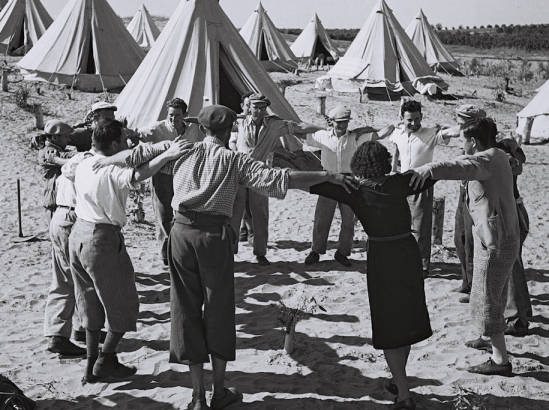

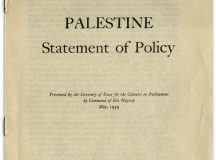
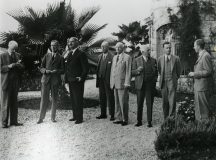
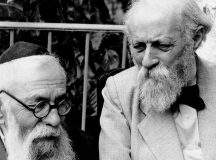
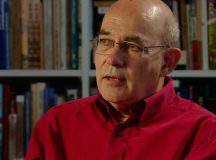
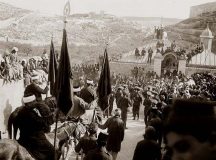































This essay is excellent. But even though the negation of the Exile was a dominant intellectual theme of early Zionism, there were others (even the poet Rahel, and later the write Agnon) who articulated a yearning for the Old Country.